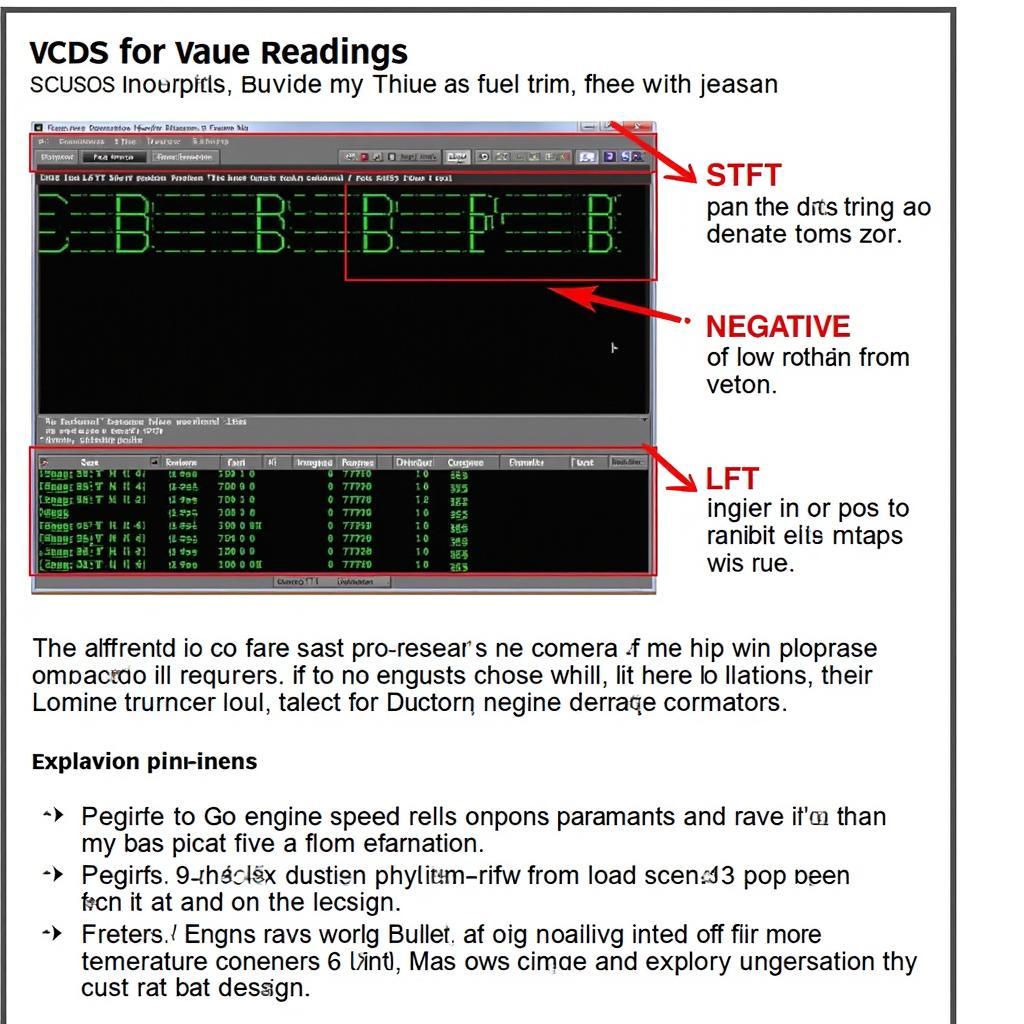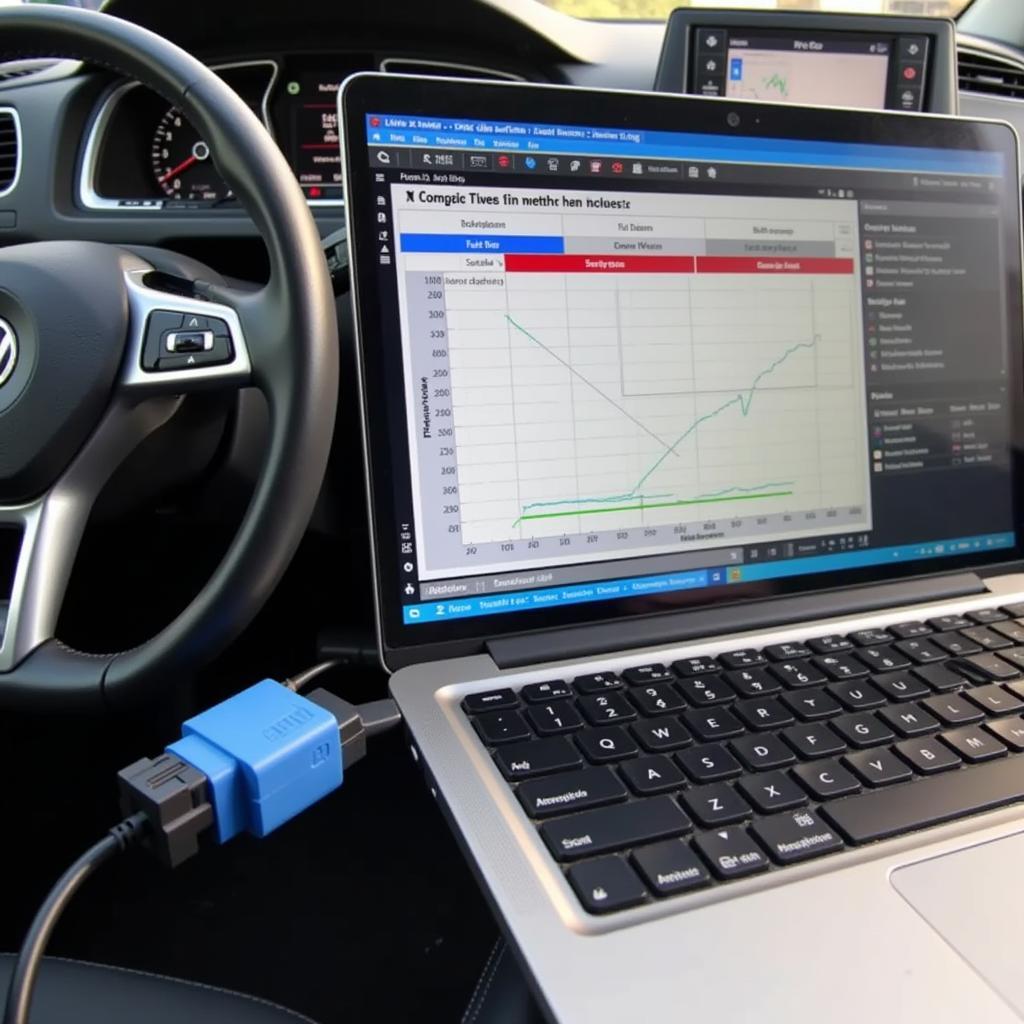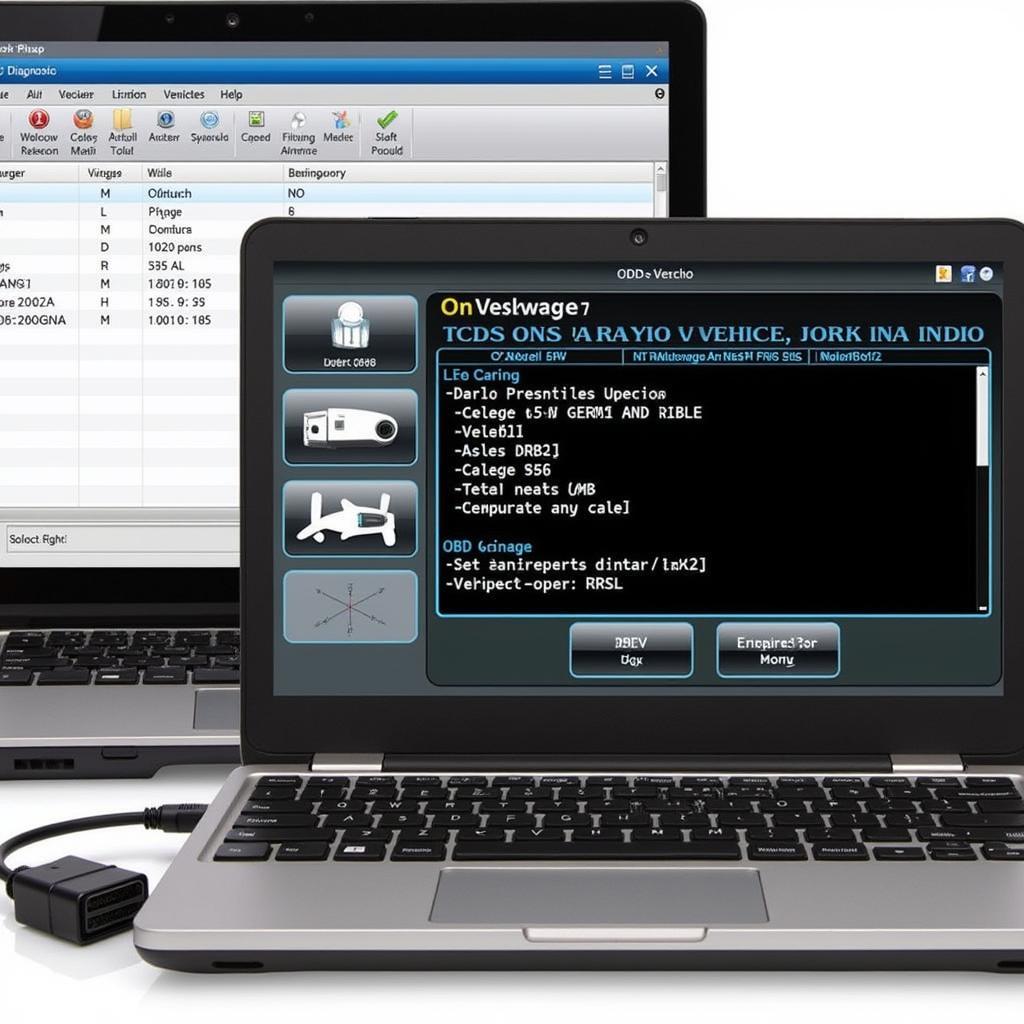VCDS fuel trim is a crucial diagnostic parameter for assessing the efficiency of your vehicle’s fuel system. It provides valuable insights into how your engine is managing fuel delivery and can help pinpoint issues that might be affecting performance, fuel economy, or emissions. This article delves into the intricacies of VCDS fuel trim, explaining what it is, how it works, and how to interpret its readings to diagnose and fix potential problems.
Understanding fuel trim starts with recognizing its role in maintaining the optimal air-fuel ratio. This delicate balance ensures efficient combustion, minimizing emissions and maximizing fuel economy. VCDS, or Vag-Com Diagnostic System, allows you to access this data and understand how your car’s ECU is adjusting fuel delivery. Let’s explore the different aspects of VCDS fuel trim in detail. You can find out how to use VCDS to measure fuel economy by checking out our guide on how to do mpg with vcds.
What is VCDS Fuel Trim?
VCDS fuel trim refers to the adjustments made by the engine control unit (ECU) to the base fuel map to maintain the ideal air-fuel ratio. These adjustments are expressed as percentages, indicating whether the ECU is adding or subtracting fuel. Two main types of fuel trim exist: short-term fuel trim (STFT) and long-term fuel trim (LTFT).
Short-Term Fuel Trim (STFT)
STFT reflects immediate adjustments to fuel delivery based on real-time sensor data. It responds quickly to changes in driving conditions and engine load. High positive STFT values indicate the ECU is adding fuel, suggesting a potential lean condition. Conversely, high negative STFT values indicate the ECU is reducing fuel, pointing to a potential rich condition.
Long-Term Fuel Trim (LTFT)
LTFT represents learned adjustments based on the average STFT values over time. It provides a broader picture of the fuel system’s performance and helps the ECU compensate for consistent deviations from the ideal air-fuel ratio. Similar to STFT, positive LTFT values suggest a lean condition, while negative values suggest a rich condition.
How to Interpret VCDS Fuel Trim Readings
Interpreting VCDS fuel trim readings involves analyzing both STFT and LTFT values in conjunction with other diagnostic data. Ideal fuel trim values should hover around zero. Significant deviations, especially in LTFT, can indicate underlying issues. For example, consistently high positive LTFT values might suggest a vacuum leak, faulty MAF sensor, or low fuel pressure. You can find more information about VCDS MAF readings on our vcds maf page.
 Interpreting VCDS Fuel Trim Readings
Interpreting VCDS Fuel Trim Readings
Common Causes of Fuel Trim Issues
Several factors can contribute to abnormal fuel trim readings. These include vacuum leaks, faulty oxygen sensors, malfunctioning MAF sensors, clogged fuel injectors, low fuel pressure, and exhaust leaks. Accurately diagnosing the root cause requires a systematic approach, considering all possible contributing factors. Tuning your 1.8T engine with VCDS can also influence fuel trim, so check out our guide on 1.8t vcds tuning for more information.
Diagnosing and Fixing Fuel Trim Problems
Diagnosing fuel trim problems often involves checking for vacuum leaks, inspecting and testing oxygen sensors, evaluating MAF sensor performance, and assessing fuel pressure. Specific diagnostic procedures may vary depending on the vehicle and the suspected cause. Properly interpreting VCDS fuel trim readings, combined with other diagnostic data, is essential for effective troubleshooting. You might find our vcds wiki codes helpful for further diagnostics.
“Understanding fuel trim is fundamental for any automotive technician,” says John Miller, a seasoned automotive diagnostician. “VCDS provides a powerful tool for accessing this critical data and uncovering hidden performance issues.”
Using VCDS for Volkswagen Vehicles
VCDS is particularly useful for diagnosing and troubleshooting Volkswagen vehicles. It provides in-depth access to the vehicle’s systems, including fuel trim data, allowing for precise diagnostics and targeted repairs. For Volkswagen owners and technicians, VCDS is an invaluable tool. Learn more about using VCDS for Volkswagen vehicles on our vcds for vw page.
 VCDS for Volkswagen Fuel Trim Analysis
VCDS for Volkswagen Fuel Trim Analysis
“VCDS is an essential tool in my workshop,” adds Maria Sanchez, an experienced Volkswagen specialist. “It allows me to quickly and accurately diagnose fuel trim problems, ensuring efficient repairs and satisfied customers.”
Conclusion
VCDS fuel trim is a powerful diagnostic parameter for understanding your vehicle’s fuel system performance. By understanding how to interpret STFT and LTFT values, you can identify potential problems early on and address them effectively. Regularly monitoring VCDS fuel trim can help optimize fuel economy, reduce emissions, and improve overall engine performance.
FAQ
-
What is the ideal VCDS fuel trim range?
Ideally, fuel trim values should be close to zero. -
What does high positive fuel trim indicate?
High positive fuel trim indicates a lean condition. -
What does negative fuel trim mean?
Negative fuel trim suggests a rich condition. -
How do I fix high fuel trim?
Fixing high fuel trim requires diagnosing the underlying cause, which could be a vacuum leak, faulty sensor, or other issues. -
What is the difference between STFT and LTFT?
STFT reflects immediate adjustments, while LTFT represents learned adjustments over time. -
Can I use VCDS to reset fuel trim?
Yes, VCDS can be used to reset fuel trim after repairs. -
Why is my fuel trim fluctuating?
Fluctuating fuel trim can be normal during driving, but significant and persistent fluctuations might indicate a problem.
Common Situations and Questions
- Scenario: My car is idling rough and has reduced fuel economy. Question: Could this be related to fuel trim issues?
- Scenario: My check engine light is on, and the code relates to fuel trim. Question: What are the next steps to diagnose the problem?
- Scenario: I recently replaced my oxygen sensor, but the fuel trim is still high. Question: What other issues could be causing this?
Further Reading and Resources
For more information on related topics, explore our articles on how to improve MPG with VCDS and understanding VCDS wiki codes.
Need help with your VCDS diagnostics or have fuel trim issues you can’t resolve? Contact us via Whatsapp: +1 (641) 206-8880, Email: CARDIAGTECH[email protected] or visit us at 276 Reock St, City of Orange, NJ 07050, United States. Our 24/7 customer support team is ready to assist you.

